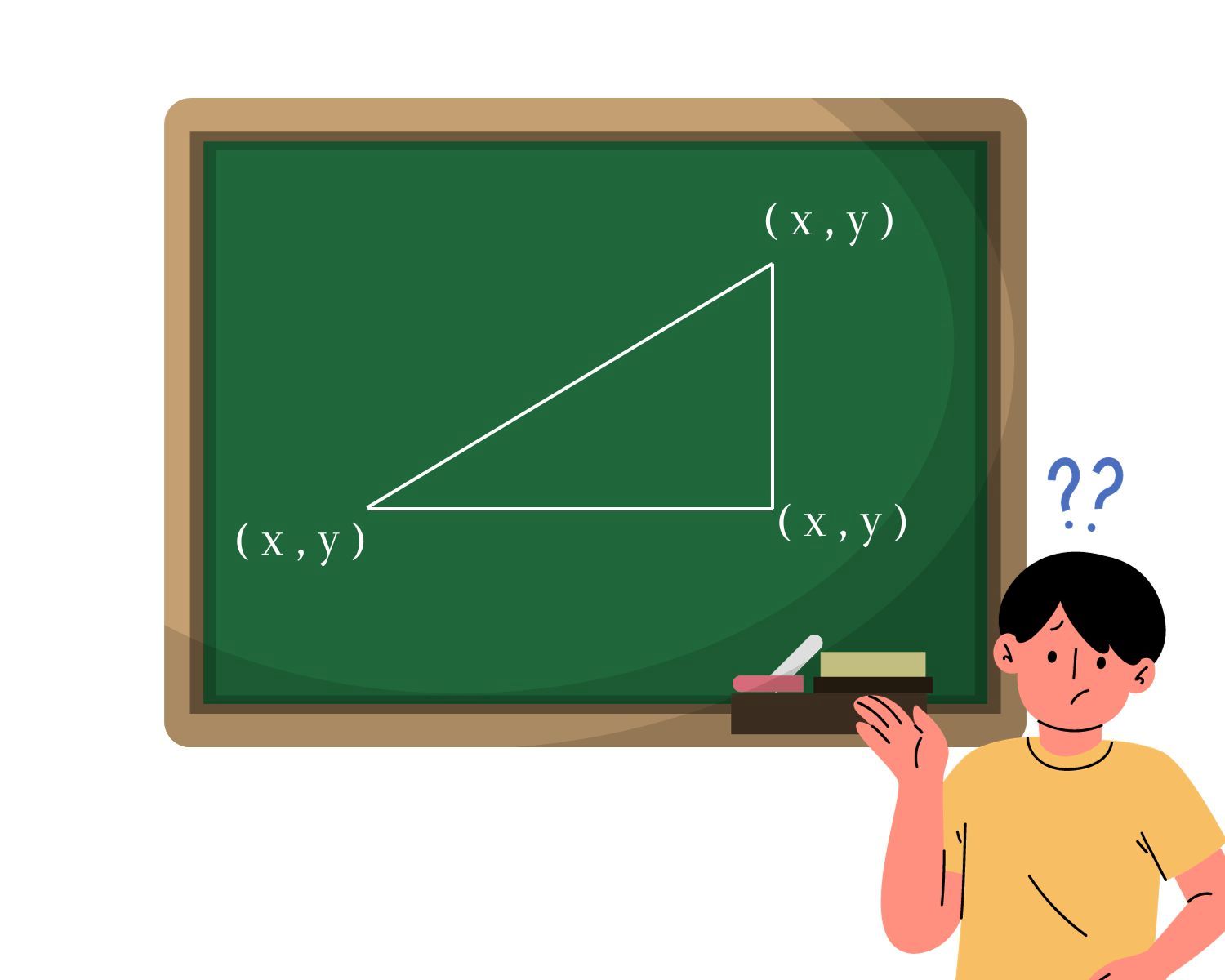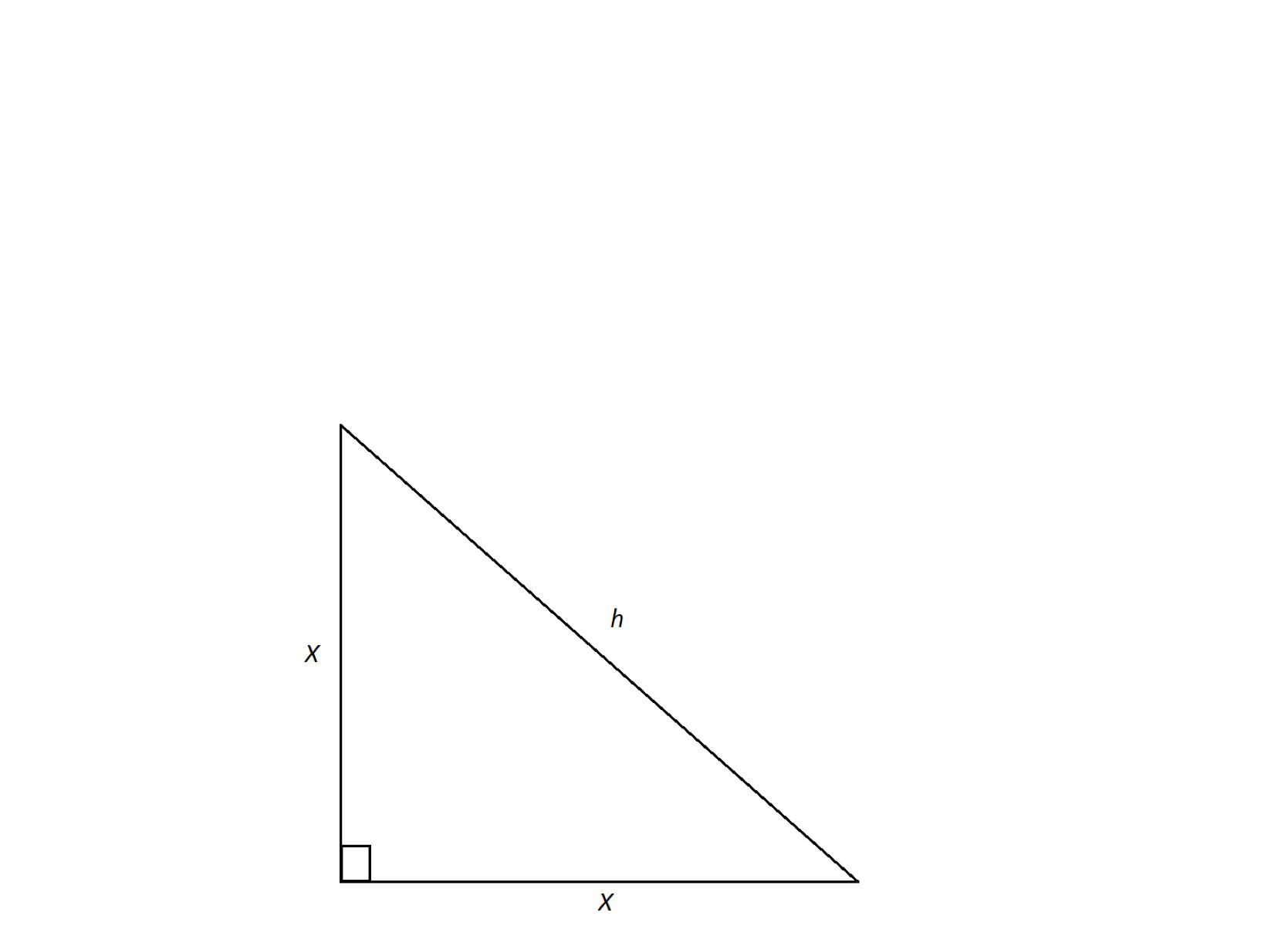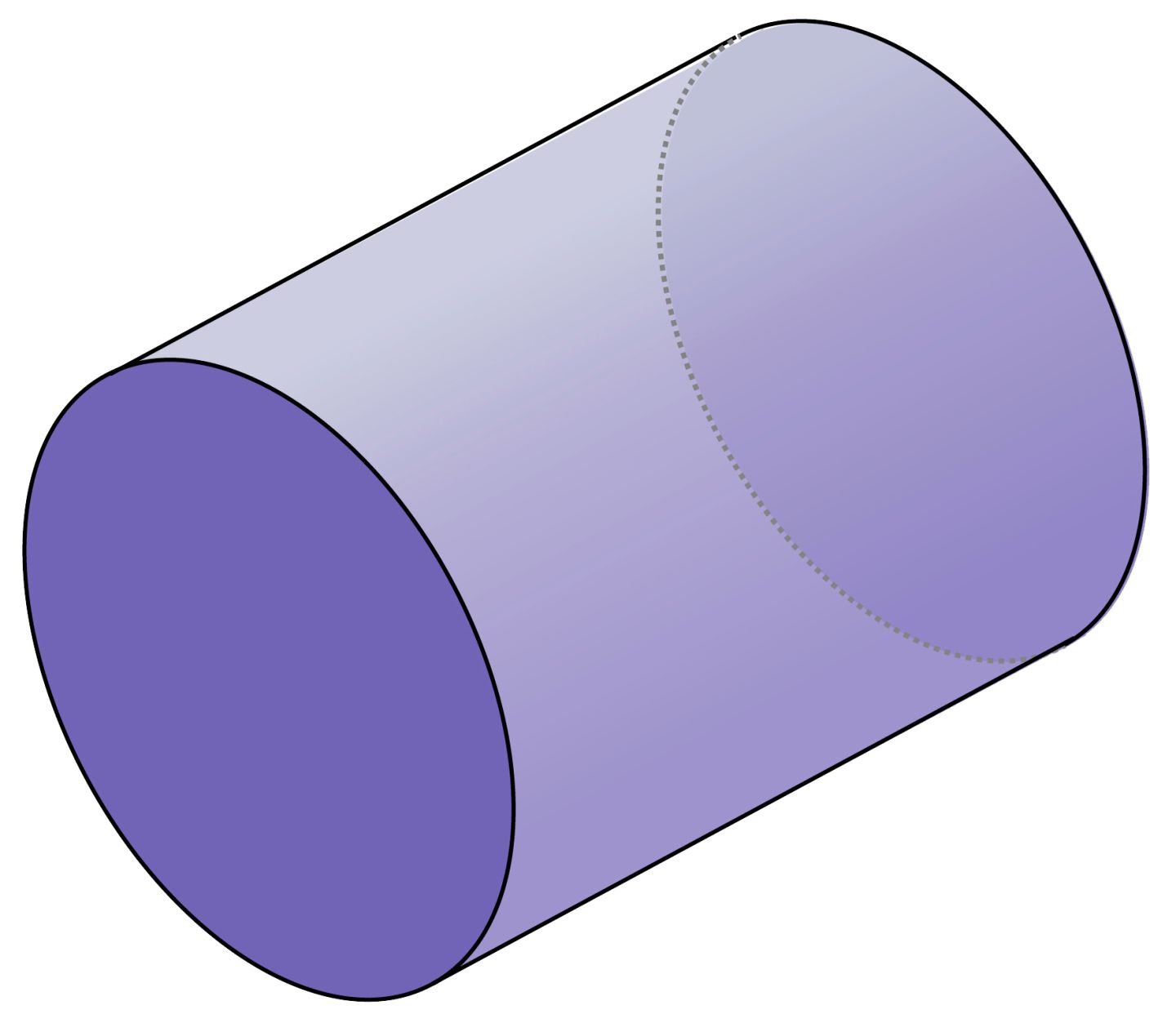Home>Mathematics>Discover The Secret To Finding The Altitude Of A Triangle With Given Vertices!


Mathematics
Discover The Secret To Finding The Altitude Of A Triangle With Given Vertices!
Published: January 10, 2024
Uncover the method for determining the altitude of a triangle using given vertices with this comprehensive guide. Master the concept of mathematics effortlessly!
(Many of the links in this article redirect to a specific reviewed product. Your purchase of these products through affiliate links helps to generate commission for Regretless.com, at no extra cost. Learn more)
Table of Contents
Introduction
Welcome to the fascinating world of geometry, where we unravel the mysteries of shapes and dimensions. Today, we embark on a journey to explore the concept of finding the altitude of a triangle with given vertices. This journey will not only deepen our understanding of triangles but also equip us with the knowledge to solve complex problems with ease.
Triangles are fundamental geometric shapes that appear in various forms in nature, architecture, and everyday objects. They possess unique properties that have fascinated mathematicians and scholars for centuries. One such property is the altitude of a triangle, which plays a crucial role in determining the height of the triangle from a given vertex to the opposite side.
The altitude of a triangle is a perpendicular line segment drawn from a vertex to the opposite side or its extension. This concept is essential in various real-world applications, such as architecture, engineering, and geography. Understanding how to calculate the altitude of a triangle not only sharpens our mathematical skills but also provides valuable insights into the spatial relationships between different elements of a triangle.
In this article, we will delve into two distinct methods for finding the altitude of a triangle with given vertices. The first method involves utilizing the distance formula to calculate the length of the altitude, while the second method employs the area formula to derive the altitude. By exploring these methods, we will gain a comprehensive understanding of the underlying principles and techniques involved in determining the altitude of a triangle.
So, fasten your seatbelts and prepare to embark on a mathematical adventure that will unravel the secrets of triangles and empower you with the tools to conquer geometric challenges. Let's dive into the world of triangles and discover the hidden treasures that await us!
Read more: How To Find The Circumcenter Of A Triangle
Understanding the Altitude of a Triangle
The altitude of a triangle is a fundamental geometric concept that holds significant importance in the realm of mathematics and real-world applications. When we talk about the altitude of a triangle, we are referring to a perpendicular line segment that extends from a vertex of the triangle to the opposite side or its extension. This line segment forms a right angle with the base of the triangle, providing a crucial measure of the height from the vertex to the opposite side.
In essence, the altitude of a triangle serves as a vertical reference point, allowing us to understand the spatial relationships within the triangle and make precise calculations regarding its dimensions and properties. By determining the altitude, we gain valuable insights into the triangle's structure and can analyze its characteristics with precision.
One key aspect to note is that the altitude of a triangle may fall within the interior of the triangle, intersecting one of its sides, or it may lie outside the triangle, extending beyond the base. This flexibility in positioning allows us to adapt our approach based on the specific requirements of a given problem or scenario.
Understanding the altitude of a triangle enables us to grasp the concept of height within the context of geometric shapes. It provides a means to quantify the vertical distance from a vertex to the opposite side, shedding light on the spatial arrangement of the triangle's vertices and sides. This knowledge forms the foundation for various geometric calculations and analyses, making it an indispensable tool for mathematicians, engineers, architects, and designers alike.
As we proceed to explore the methods for finding the altitude of a triangle with given vertices, it is crucial to appreciate the underlying significance of this concept. The altitude not only defines the vertical dimension of the triangle but also unlocks a deeper understanding of its structural integrity and spatial orientation. With this foundational understanding in place, we are poised to delve into the practical techniques for calculating the altitude of a triangle, armed with the knowledge of its inherent significance and implications.
Method 1: Using the Distance Formula
When it comes to determining the altitude of a triangle with given vertices, one effective method involves leveraging the distance formula. This approach allows us to calculate the length of the altitude with precision, drawing upon the principles of coordinate geometry to unravel the geometric puzzle.
The distance formula serves as a powerful tool for computing the distance between two points in a coordinate plane. In the context of finding the altitude of a triangle, we can apply this formula to ascertain the length of the perpendicular line segment from a vertex to the opposite side.
To begin this method, let's consider a triangle with vertices A(x1, y1), B(x2, y2), and C(x3, y3). Our goal is to determine the altitude from vertex A to the side opposite it, which is defined by the line segment BC. The first step involves calculating the slope of the line containing BC, denoted as m_BC. With the slope in hand, we can then determine the equation of the line perpendicular to BC that passes through point A.
Next, we identify the coordinates of the foot of the perpendicular from A to BC, denoted as D(x_d, y_d). Using the slope of BC and the coordinates of A, we can derive the equation of the line perpendicular to BC. By solving the system of equations between the line containing BC and the perpendicular line passing through A, we obtain the coordinates of point D.
Once the coordinates of D are determined, we can apply the distance formula to calculate the length of AD, which represents the altitude of the triangle from vertex A. The distance formula, √((x2 – x1)^2 + (y2 – y1)^2), allows us to compute the distance between two points in a Cartesian coordinate system, yielding the precise measurement of the altitude.
By employing the distance formula in conjunction with the principles of coordinate geometry, we can effectively find the altitude of a triangle with given vertices. This method harnesses the power of mathematical equations and geometric relationships to unravel the mystery of the altitude, providing a systematic and reliable approach to solving geometric problems with ease and precision.
Method 2: Using the Area Formula
In the quest to uncover the altitude of a triangle with given vertices, we encounter another compelling method that harnesses the prowess of the area formula. This approach offers a unique perspective, leveraging the relationship between the area of a triangle and its altitude to unveil the sought-after vertical dimension.
The area formula for a triangle, A = 0.5 * base * height, serves as the cornerstone of this method. By strategically manipulating this formula and leveraging the given vertices of the triangle, we can derive a systematic approach to calculating the altitude with precision.
To embark on this method, let's consider a triangle with vertices A(x1, y1), B(x2, y2), and C(x3, y3). Our objective is to determine the altitude from vertex A to the side opposite it, represented by the line segment BC. We begin by computing the area of the triangle using the coordinates of the given vertices.
Once the area of the triangle is calculated, we can then focus on extracting the length of the side BC, which serves as the base of the triangle in the area formula. This step involves applying the distance formula to determine the distance between the points B and C, yielding the precise measurement of the base length.
With the base length in hand, we can rearrange the area formula to solve for the altitude, effectively isolating the height of the triangle. By substituting the calculated area and the length of the base into the rearranged formula, we can solve for the altitude with remarkable accuracy.
This method capitalizes on the intrinsic relationship between the area of a triangle and its altitude, offering a streamlined and intuitive approach to finding the vertical distance from a vertex to the opposite side. By leveraging the area formula as a guiding beacon, we illuminate the path to unlocking the altitude of the triangle, empowering us to navigate the geometric landscape with confidence and precision.
In essence, the area formula method provides a holistic perspective, intertwining the geometric properties of a triangle with the fundamental principles of area and height. By seamlessly integrating these elements, we unravel the enigma of the altitude, shedding light on the vertical dimension of the triangle and its profound implications in the realm of geometry and beyond.
Conclusion
In conclusion, our exploration of finding the altitude of a triangle with given vertices has unveiled a rich tapestry of mathematical techniques and geometric insights. We embarked on this journey with the aim of unraveling the secrets of triangles and empowering ourselves with the tools to conquer geometric challenges. Through our exploration, we have gained a profound understanding of the altitude of a triangle and the diverse methods for calculating this fundamental geometric dimension.
The journey began with a deep dive into the concept of the altitude of a triangle, elucidating its significance as a perpendicular line segment that provides crucial insights into the vertical dimension of the triangle. We delved into the spatial relationships within a triangle, appreciating the role of the altitude in quantifying the height from a vertex to the opposite side. This foundational understanding set the stage for our foray into the practical methods for finding the altitude of a triangle, equipping us with the knowledge to navigate the geometric terrain with confidence and precision.
The first method we explored involved leveraging the distance formula, drawing upon the principles of coordinate geometry to calculate the length of the altitude with precision. By applying the distance formula and employing mathematical equations, we unraveled the mystery of the altitude, demonstrating the power of systematic and reliable approaches in solving geometric problems.
Our exploration then led us to the method of using the area formula, which provided a unique perspective by intertwining the area of a triangle with its altitude. This method illuminated the intrinsic relationship between the geometric properties of a triangle and the fundamental principles of area and height, offering a holistic approach to finding the altitude with remarkable accuracy.
In essence, our journey has not only equipped us with the technical prowess to calculate the altitude of a triangle but has also instilled in us a deeper appreciation for the elegance and intricacies of geometric concepts. By unraveling the secrets of triangles and mastering the art of finding altitudes, we have expanded our mathematical repertoire and fortified our problem-solving skills.
As we conclude this expedition, we carry with us a newfound sense of confidence and proficiency in navigating the geometric landscape. The knowledge and insights gained from our exploration will serve as guiding beacons, illuminating the path to future mathematical endeavors and empowering us to conquer new frontiers in the captivating realm of geometry.















